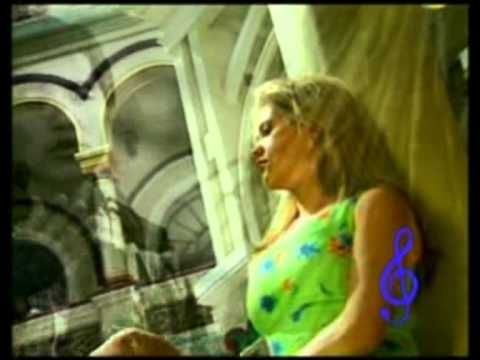Science Time
Roger Penrose – Bridging Consciousness, Quantum Physics & The Universe
Subscribe to Science Time: https://www.youtube.com/sciencetime24
Roger Penrose is a renowned mathematician and physicist who has made significant contributions to the fields of quantum physics, cosmology, and the study of the mind. In his lecture titled “Bridging Consciousness, Quantum Physics & The Universe,” Penrose discusses the intersection of these three fields and proposes a new theory of consciousness that is grounded in the principles of quantum mechanics.
At the heart of Penrose’s theory is the idea that consciousness arises from the collapse of quantum wave functions in the brain. According to Penrose, this collapse creates a fundamental connection between the macroscopic world of human experience and the microscopic world of quantum physics. He argues that this connection is responsible for the emergence of consciousness as we know it.
Throughout his lecture, Roger Penrose draws on examples from mathematics, physics, and neuroscience to support his arguments. He also delves into the concept of the “unconscious mind” and how it relates to his theory of consciousness.
Overall, Roger Penrose’s lecture provides a thought-provoking exploration of the nature of consciousness and its relationship to the quantum world and the universe at large. His ideas challenge traditional assumptions about the mind and offer a new perspective on the mysteries of human experience.
#science #universe #quantumphysics
Source




Brain – Mind
—–
Our brain works on a dualistic basis:
usually consciousness and rarely subconsciousness.
——
1 – Consciousness of the brain works on various
electromagnetic energy fields (alpha, beta, . . . etc.)
An electroencephalogram (EEG) can record this ''normal logical'' electrical
activity of the brain (brain works as computer – "Turing Machine")
2 – Subconsciousness is process on micro-quantum-level
(brain suddenly takes a new decision / action – "eureka")
The reason of unconscious process is quantum particle .
Suggestion:
According to the Pauli Exclusion Principle, only one (1) electron
can manage an atom, molecule, cell, brain.
—–
a) Quantum process appears when all atoms of brain are
in Bose-Einstein state (superfluidity).
b) Then the electron gains strength to ''superconductivity'' and
can change the old brain's program to a new decision – "eureka".
New decision is result of – a "Self-quantum particle".
c) After a short moment- "eureka" the brain again works like a computer.
(but according to a new program)
=====.
''The laws of quantum mechanics itself cannot be formulated …
without recourse to the concept of consciousness.''
— Eugene Wigner
#
Book: ‘'The Holographic Universe’'
''Contrary to what everyone knows it is so, it may not be the brain
that produce consciousness, but rather consciousness that creates
the appearance of the brain''
/ page 160, by Michael Talbot /
#
“… Indeed an understanding of psi phenomena and of
consciousness must provide the basis of an improved
understanding of quantum mechanics. ”
/ Evan Walker /
======.
Kamień Felks. currently the fastest spinning 200kg stone on the planet
Interesting 🎉
The problem with his quantum consciousness idea is that microtubules are part of every cell in the body not just neurons.
Quantum mechanics is more compatible with Leibniz's relational view of the universe than Newton's absolute view of the universe.
In Newton's absolute view, space and time are absolute and independent entities that exist on their own, independent of the objects and events that take place within them. This view implies that there is a privileged observer who can observe the universe from a neutral and objective perspective.
On the other hand, Leibniz's relational view holds that space and time are not absolute, but are instead relational concepts that are defined by the relationships between objects and events in the universe. This view implies that there is no privileged observer and that observations are always made from a particular point of view.
Quantum mechanics is more compatible with the relational view because it emphasizes the role of observers and the context of measurement in determining the properties of particles. In quantum mechanics, the properties of particles are not absolute, but are instead defined by their relationships with other particles and the measuring apparatus. This means that observations are always made from a particular point of view and that there is no neutral and objective perspective.
Overall, quantum mechanics suggests that the universe is fundamentally relational rather than absolute, and is therefore more compatible with Leibniz's relational view than Newton's absolute view.
What part of physical world makes life break the overall rules of Physics where non-life never does? An example. A plant works against gravity. A rock does not. I know the plant is reaching for the sun, but what in it's caused some groupings of atoms, as an example, to oppose the physical laws almost all other atoms do not? A rock does not strive against gravity. Yet, both a rock and a plant are made up of atoms. You can break the argument into different groups, for example, quarks instead of atoms, but all that exist have the basis in some units.
So why do some atoms break the rules all other atoms follow?
A less clear example, is that cattle huddle together in the cold, while grains of sand don't. Yes, one is alive and the other not, by our definition, but again the issue is why some units of atoms, a recognizable to humans, as cattle or rocks or sand or plants, act entirely under the known laws of physics and yet other units of atoms do not act entirely under the known laws of physics?
I know by question is clumsily put, but would love a response?
…Penrose endlessly guffs on
about everything but
in truth knows
nothing
Regards thank you
The tuner to the cosmic conciousness is turned off
There is term called "Quantum scrambling" that has to do with human resurrection it sounds very religion but the truth is that there is no proof that resurrection is impossible or maybe it is just for now i mean who wouldn't want to have its love ones back
Still so much to understand in the Universe. The brain is fantastic, but at the same time very simple. I belong to the group that think consciousness is a result of computation, memory and a feedback loop. But hey, I'm not a scientist 😉
Let the controller come ,then the game begins
Major points of the video:
Penrose and Hameroff's Orch-OR (orchestrated objective reduction) theory suggests consciousness arises from quantum processes in neuron microtubules.
Different brain structures, such as cerebrum and cerebellum, may contribute differently to conscious and unconscious processing.
Quantum wave function collapse might create moments of awareness, linking physical and mental realms.
Current experiments haven't supported gravity-related quantum collapse models, but quantum biology discoveries support the potential for quantum processes in living organisms.
Understanding space-time and its connection to quantum processes may be crucial to comprehending the nature of consciousness.
The Orch-OR theory raises philosophical questions about free will, personal identity, and the nature of reality.
Various perspectives exist regarding the basis of consciousness, and incorporating quantum physics into AI models may be necessary for achieving artificial consciousness.
Ethical questions regarding the treatment and rights of conscious AI systems arise as AI continues to advance.
Short summary:
The Orch-OR theory proposed by Roger Penrose and Stuart Hameroff suggests that consciousness arises from quantum processes within neuron microtubules. This theory presents philosophical questions about the nature of reality, free will, and personal identity. While experiments haven't supported gravity-related quantum collapse models, discoveries in quantum biology have supported the potential for quantum processes in living organisms. Understanding the nature of space-time and its connection to quantum processes may be key to unraveling the mystery of consciousness. These ideas also have significant implications for artificial intelligence and raise ethical questions about the treatment and rights of potentially conscious AI systems.
I recently had surgery on my wrist and when the doctor asked me if I had any questions I just laughed. And then proceeded to ask him exactly how he shuts off my consciousness and then turns is back on again. I asked what part of the brain if affects. We talked for 30 minutes. It was fascinating.
WAAAIT a minute! It's not conscious control. The control aspect is unnecessary! It's an illusion of being split between conscious and unconscious control. Do you see what this means? It means there is a higher state of consciousness.
What establishes the difference between the mechanism responsible for consciousness and what it's conscious of? Is it material? That's a philosophical concept. Also, what is dreaming and imagining? What is the inner sense?
Gravity is a stupid concept. The sky is not falling up. 0D is the center of our mirror universe and all things and parts are drawn to the center, the whole.
Ether > Gravity.
Monad = the zero-dimensional space holding our quarks together with the Strong Nuclear Force.
The "other side" is the other side of the Monad. That horizon is life/death so good luck with that one.
This is the contingent and "less real" side of the Monad. Other side is necessary and "more real".
The only thing necessary about us here has no spatial extension, zero size and exact location only. Quarks and anti-quarks?
Read Leibniz's Monadology.
Mathematicians talk about Monad. John the Baptist and Jesus the Christ spoke highly of the Monad.
Entropy is also a stupid concept. This is not a closed system. The Monad creates from the quantum and black holes destroy at the cosmological.
Ectropy is what we're dealing with, not entropy. Closed system says who? Isaac Newton's fraudulent ass?
Newton said 0 and it's geometric counterpart 0D are not-necessary (on account of them being not-natural which is true) so now everyone argues whether 0 or 1 is necessary or contingent.
0 is necessary since it has no predecessor.
1 is contingent on 0 since 1 has a predecessor.
Duh. So, extrapolate that to 0-4's geometric counterparts 0D-4D and there's no debating anymore. This is the contingent and "less real" side of 0D.
Thank you for the video. There is a hypothesis – a single picture of the universe: When moving and fluctuating in a vacuum, the electromagnetic field in the nodes – Forms quanta of gravity – Which carry the speed of light. Suppose – Can be detected using a mobile, new hybrid – the experience of Michelson Morley, if it is in motion relative to the DGP – the dominant gravitational field, for example in 🚆, as in Einstein's mental experience.
Every part of the body
Has its own psychology and brain
And is a twenty four hour interpreter
By changing cellular memory
You change the psychology
Of the body
Memory is not only something that we store in some mysterious way in our brains. Even in our brain a huge percentage of memory is sub-conscious or completely unconscious.only a small percentage of our overall brain memory is conscious,meaning if we make an effort we can remember.it’s is said this conscious part includes not more than 10 percent of our experiences.
Seperate from that,another much more important part of our memory is stored in our bodies.Each muscly,each organ,each cell,each molecule,each atom and smaller has its own memory-memory in the sense that certain experiences we go through will have their very specific and own effect and imprint in the bodies biochemistry .
Each of our emotions, whether negative or positive, causes the release of a particular composition of hormones,enzymes or other biochemical fluids.
Imagine the body as being a computer and the experiences that we have as creating a computer program that runs on the computer.
From “Returning to the Void”
Papa Joe author,written by Iris Loesal